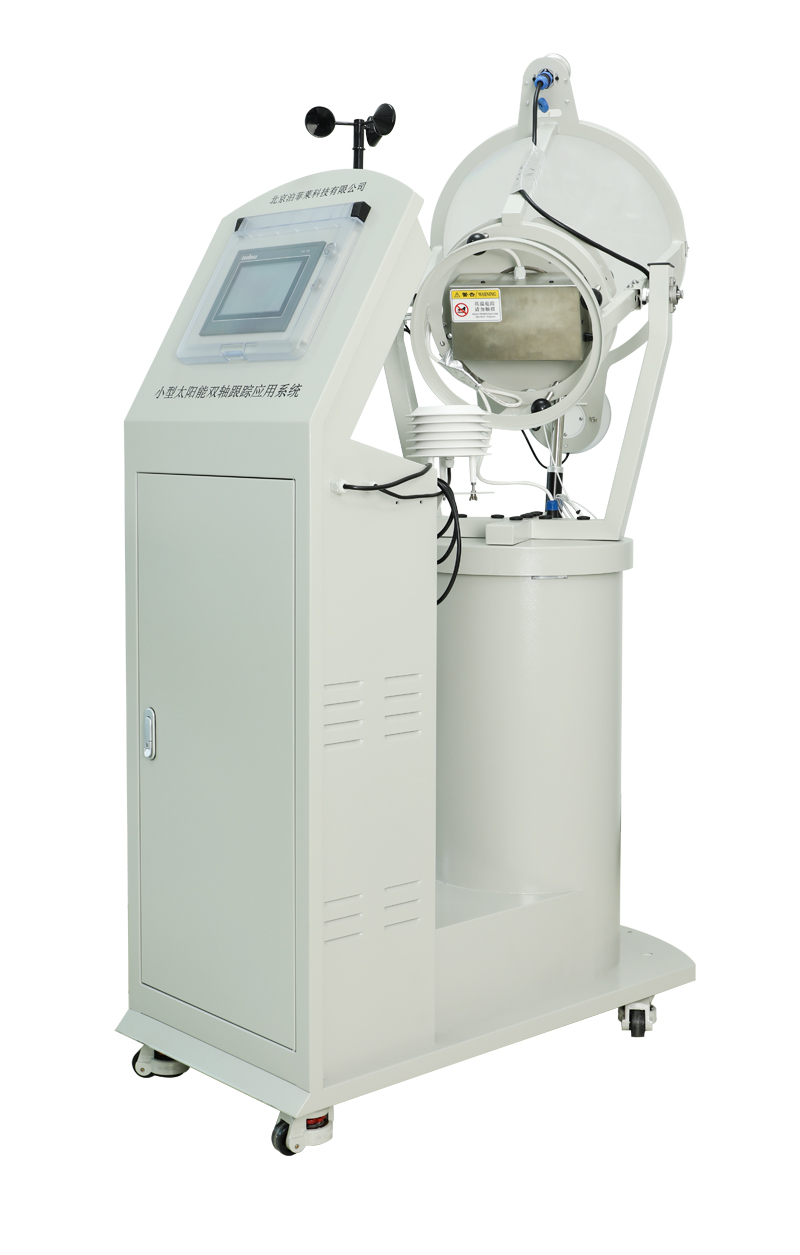Traditional photocatalytic research uses "lamps" as the light source for reactions, simulating sunlight with lamps. The PLS-STAS-I small-scale solar double-axis tracking application system can directly utilize sunlight to drive catalytic reactions in outdoor environments. It is an application-based testing platform for researching solar energy utilization.

Achieved high-precision solar tracking and focusing:
Conventional products typically use photoelectric tracking, which is highly accurate but may have difficulty responding to changes in light when it's cloudy or when sunlight is weak (while scattering is relatively strong). This can lead to misalignment or even serious accidents. Perfectlight Technology's independently developed solar tracking system employs both photoelectric tracking (light control) and solar position tracking (time control) to achieve higher accuracy and safety.
▲ Highly Suitable ● Moderately Suitable ○ Can Be Used
Photocatalytic reaction platform: Uses sunlight concentration as the light source for photocatalytic reactions, evaluates the photochemical reaction process through gas product monitoring, measurement, and analysis;
▲ Solar cell testing and selection: Tests, selects, and evaluates solar cells of CPV systems using high magnification concentration;
▲ Photovoltaic power generation coupled with photodriven catalysis applications: Based on the tracking platform, it provides photovoltaic, reactors, energy storage, light sources, control acquisition, and demonstrates and applies photodriven catalysis;
Double-axis tracking system
Integrated design of double-axis tracking bracket and control box;
Tracking modes: Optical tracking + time tracking;
Elevation angle range: 0-90°;
Horizontal angle range: -110~+110° (0° is due south);
Solar tracking accuracy: Optical tracking: better than 0.3°; time tracking: better than 1°;
Tracking device safety protection: extreme position protection, high wind protection, rain protection.
Concentration reaction system
Concentration lens: Fresnel lens, area 0.2 m2; minimum concentrated spot area 7 cm2; concentration ratio: 278;
Reaction temperature: 5~60°C;
Reaction pressure: atmospheric pressure;
Gas collection: 300 mL/500 mL gas collection bags;
Optical power calculation device calculates optical power of photochemical reaction working surface ≤10 W/cm2.
System is monitored and controlled by a PLC all-in-one machine, using GPS positioning parameters;
Solar tracking status: altitude angle, azimuth angle;
Use daylight conditions: two hours after sunrise to two hours before sunset;
Operating environment temperature: -25°C~55°C;
System parameter monitoring: time, current position, angles, various monitoring parameters, converted parameters;
Solar radiation monitoring: direct/total solar radiation;
Environmental parameter monitoring: atmospheric (temperature, humidity, pressure), wind speed;
System waterproof rating: IP67;
System windproof rating: Grade 6.